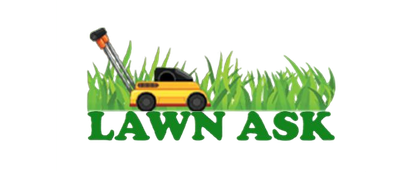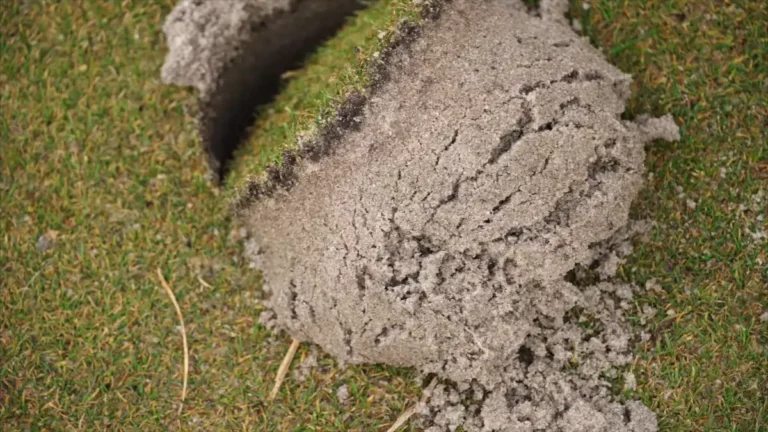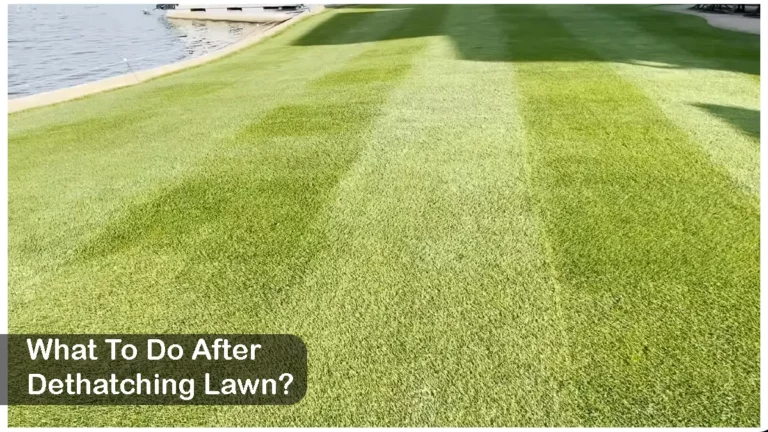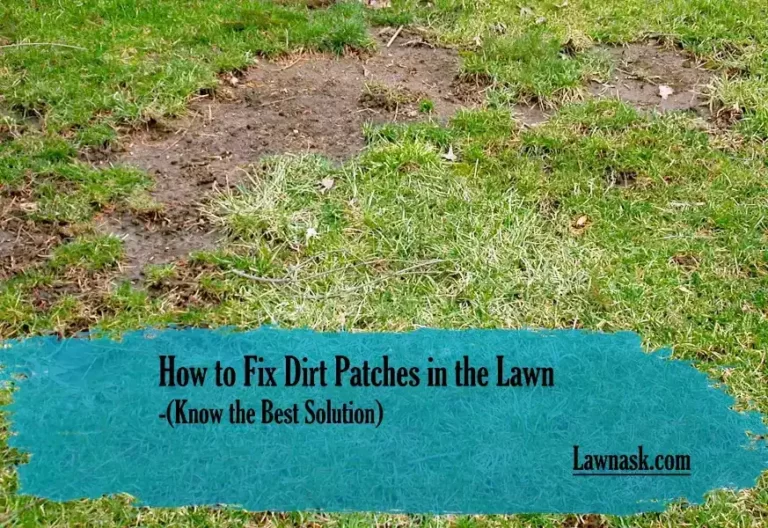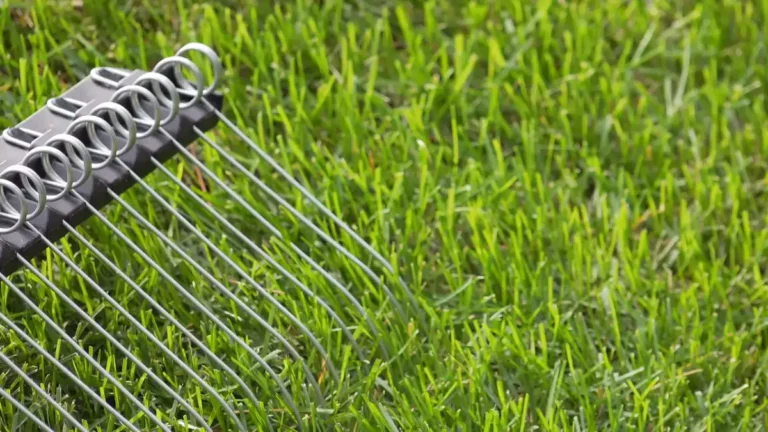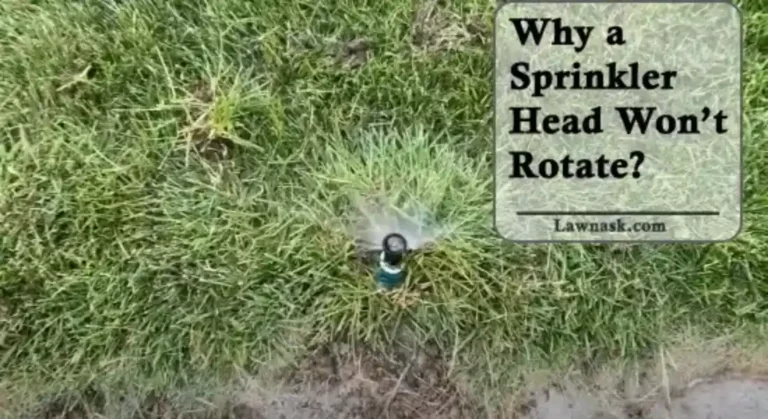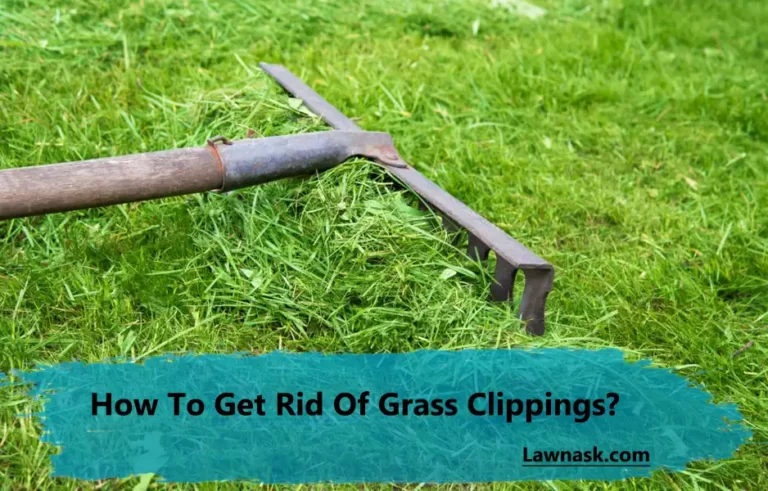Lawn Looks Bad After Dethatching: How To Fix It?
Many homeowners experience anxiety after dethatching their grass since it no longer looks as lush as it did before.
The aftermath of dethatching can be disappointing, with exposed soil, thinning grass, and an overall dull appearance. Despite its unattractive appearance, this period is necessary for a successful lawn repair.
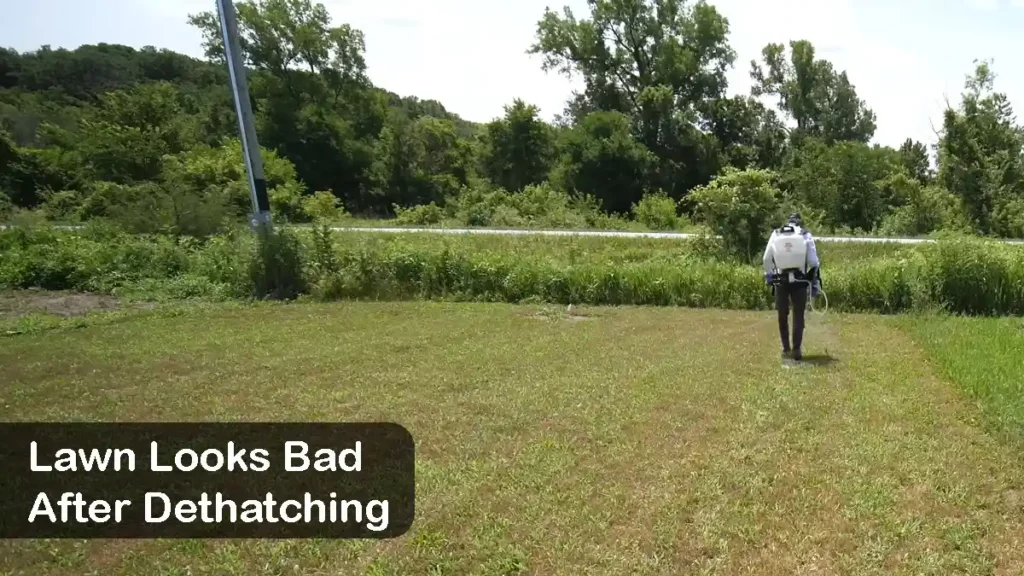
After Dethatching: Understanding Why Your Lawn Looks Bad
The appearance of your grass may alter after dethatching, which is natural. Thatch is a layer of dead grass and other organic debris that can accumulate between the soil and grass blades, and dethatching is a useful technique for removing this layer.
A healthier lawn is the result of regular dethatching, which improves the lawn’s ability to absorb water, nutrients, and oxygen at the root level. However, dethatching, like any other lawn care activity, can have some unintended consequences.
It’s possible that dethatching will put some strain on your grass. Consider it a short-term deviation from the norm for the grass. After dethatching, your lawn may develop brown patches, thin spots, or even weeds.
The key is to learn what causes these shifts and how to adapt to them successfully. If you give your lawn the attention and time it needs, it will recover and look much better in no time.
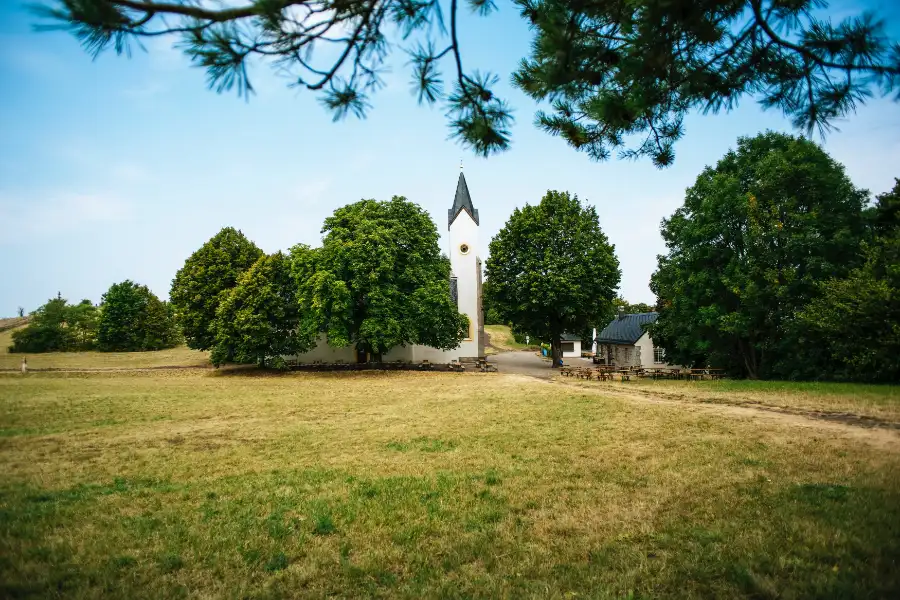
Recognizing Signs of a Bad Lawn After Dethatching
It’s important to keep an eye out for any indicators of trouble in your lawn’s turf after you’ve dethatched it. Grass can be temporarily stressed by dethatching, causing a lawn look bad. Some frequent problems your grass may have after dethatching include:
1. Brown Spots
The lawn may develop brown stains or patches after dethatching, which can be unsightly. Some of the grass may have been harmed, or the exposed soil may have dried out.
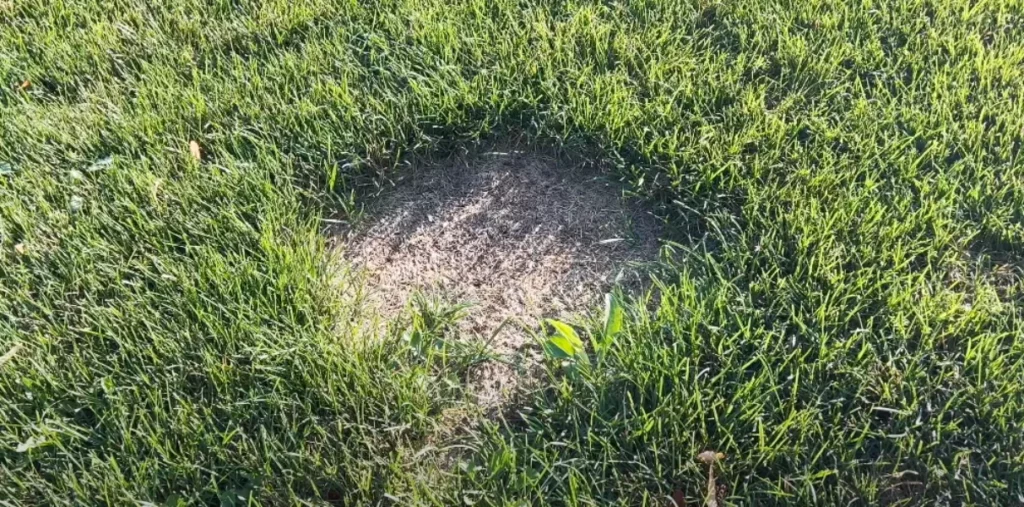
2.Thinning Grass
Some portions of the lawn may appear to have less grass because the thatch was removed there. It may not appear as thick and verdant as it once did.
3. Emergence of Weeds
Weeds might sprout up in the bare places and disturbed regions left behind after dethatching. Watch for the emergence of any new weeds.
4.Slow Recovery
Your lawn may need some time to recover and return to a healthy state. Grass types, environment, and maintenance all play a role in how quickly a lawn recovers.
5. Dry Soil
Soil dehydration is a common problem in hot, dry climates, and it can happen fast when soil is exposed. Make sure to irrigate your lawn sufficiently to avoid soil drying out.
6. Uneven Texture
Disruption to the grass during dethatching can cause the lawn’s texture to look uneven or rough.
Keep in mind that these symptoms are usually just temporary, and that your grass will recover and become stronger with time and attention.
What are Reasons for Lawns Looking Bad After Dethatching?
Lawns may look bad after dethatching for several reasons:
Using Wrong tool
Using the incorrect dethatching tool can result in uneven thatch removal, leading to bare spots or patchy areas in the lawn. The grass can be uprooted by an aggressive tool, while the thatch can be left behind by a less efficient one.
Choosing the appropriate equipment is essential for dethatching to result in a consistent and healthier looking lawn.
The effectiveness of the dethatching equipment makes a big difference in the final look of the lawn. It’s important to think about what kind of rake, power rake, or dethatching tine rake your lawn requires.
You Dethatched a Dormant Lawn
If a lawn is dormant, dethatching it could hurt it because the grass is weak and has less ability to heal. Roots and crowns that are left exposed during dormancy increase a plant’s vulnerability to stress and disease.
In addition, weed invasion is more likely because of the lawn’s slow growth, which makes it more difficult to fill in bare patches. Grass is already under stress from the weather, and dethatching adds to that stress.
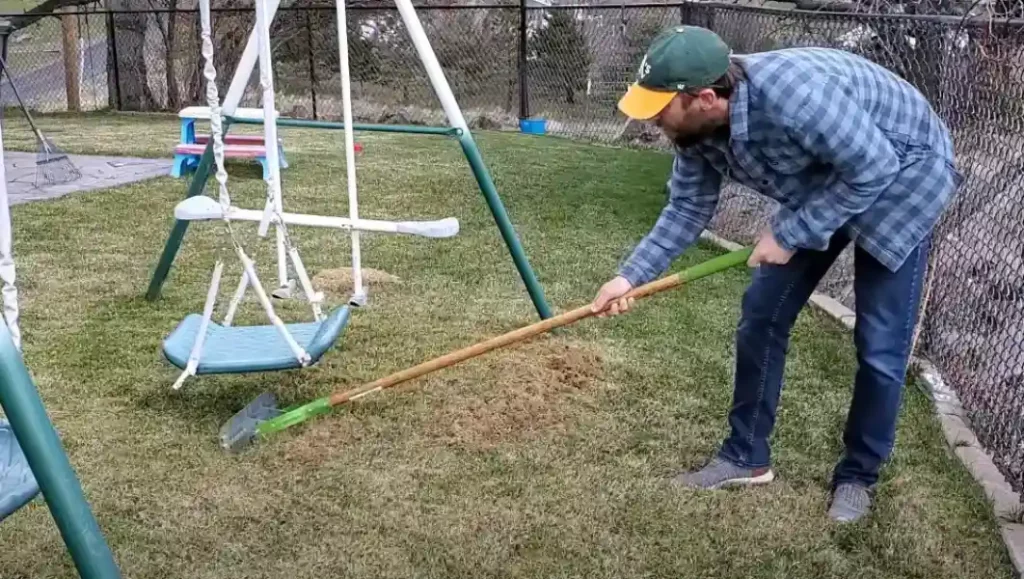
Adverse Weather
It’s best to wait until the right time of year or weather conditions exist before dethatching your lawn. The soil should be relatively wet, and the grass should be actively growing, before you begin.
During the wet season, dethatching can be harmful to the grass. It’s possible that the soil is too damp for your dethatching equipment to work, in which case the grass will be pulled out.
Thatch Was Insufficient
Thatch should never be completely removed from the lawn. Thatch is necessary. It protects grass roots from burrowing animals and bugs. It retains moisture, holds nutrients, and protects your lawn from overfertilization. It also keeps your lawn’s pH neutral.
The optimal thickness of thatch is half an inch. Dethatch only if the compressed and measured thatch layer is more than 3/4″.
The Lawn Has Had Previous Problems
If your grass still looks ugly after dethatching, it may have suffered from disease, excessive growth, or poor nutrition. Problems after dethatching may be made worse by factors like these.
For instance, if the grass or roots are damaged by the dethatching equipment, the illness might weaken or kill your lawn.
Therefore, it is important to do regular inspections of your lawn for pests, illnesses, and nutritional deficiencies.
Don’t neglect your grass if it isn’t looking its best. Once it is healthy again, you can dethaw it.
Related Post: What To Do After Dethatching Lawn? (6 Steps you Need to Follow
What Are The Fixes For A Lawn That Looks Bad After Dethatching?
Try these following steps to fix your lawn that looks bad after dethatching-
Get rid of any stray grass or thatch, then rake the lawn for a smooth surface.
Rake any dead grass or thatch gently and dispose of it in a compost pile or yard trash bin to obtain a good sense of the current state of the lawn. Thatch can smother the grass underneath, so removing it is an effective way to preserve what’s left of your lawn.
Watering
Give your lawn plenty of water while it recovers. Maintain a steady, but not drenching, moisture level in the soil.
The grass’s roots can recuperate and new growth can be stimulated with the right amount of irrigation.
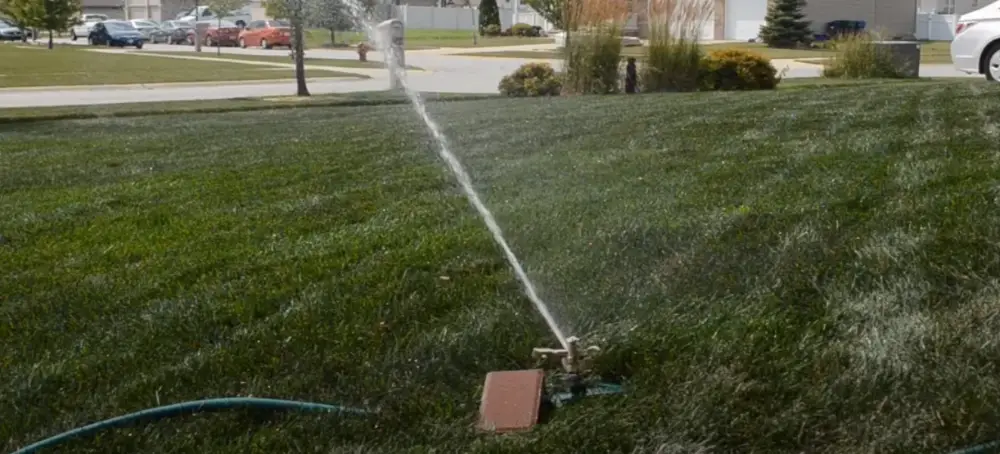
Fertilization
A well-balanced lawn fertilizer can help grass recover by supplying it with the nutrients it needs. A balanced fertilizer will have equal parts nitrogen (N), phosphorus (P), and potassium (K).
Overseeding
The term “overseeding” refers to the practice of sowing new grass seed onto an already established lawn or field.
Select a high-quality grass seed mixture that is a good match for the existing grass. The lawn will be thickened and barren spots filled in as a result.
Mowing Height
To prevent the grass from being mowed too short, raise the mower’s cutting height. Grass with longer blades tends to have deeper roots and recovers more quickly.
Aeration
To reduce soil compaction and increase air flow to the plant roots, aerating your lawn may be a good idea. This may promote better nutrition absorption and growth.
Avoid Heavy Traffic
Try to keep foot traffic and other heavy uses off the lawn as much as possible while it recovers. The grass will be able to grow without interference.
Routine maintenance
Once your lawn has shown signs of recovery, it is important to keep up with routine maintenance tasks like mowing, watering, and fertilizing to ensure its continued health and lushness.
Keep in mind that the recovery period for a lawn might vary depending on things including the type of grass used, the environment, and the general health of the lawn. If you follow these instructions and give your grass the attention it requires, it should flourish.
